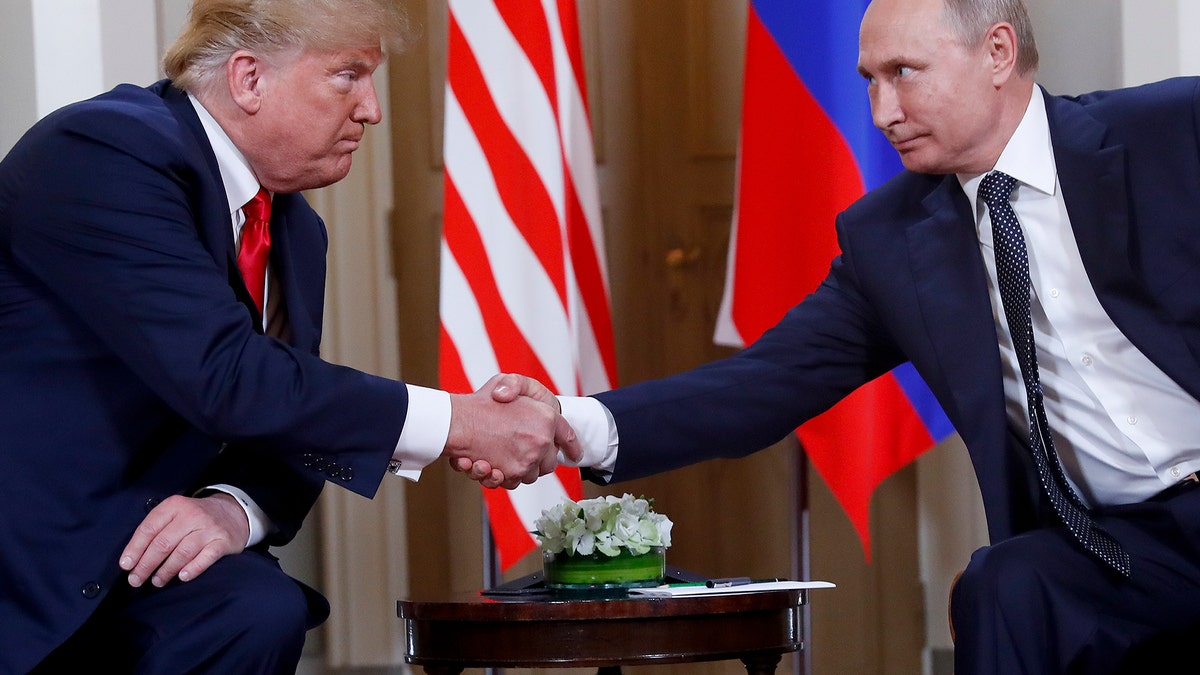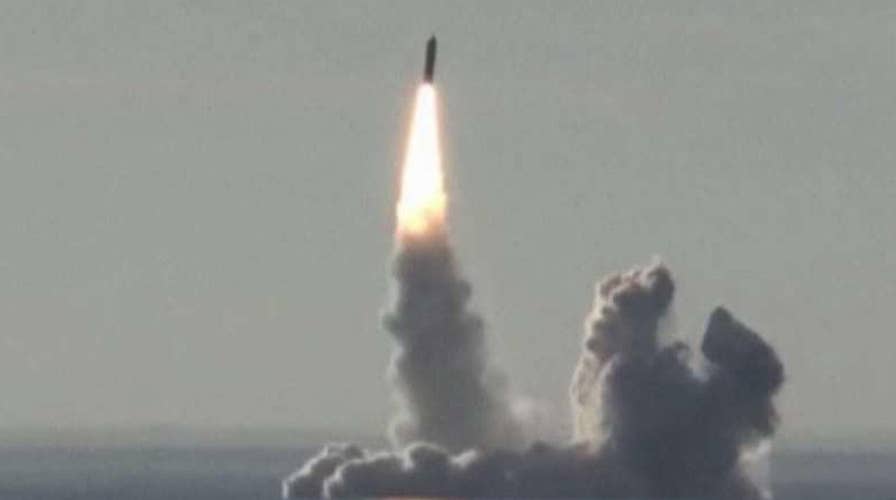Russian navy operating at pace not seen since Cold War
Pentagon warns about Russian naval activity; Lucas Tomlinson reports.
Pentagon and NATO brass have issued fresh warnings about increased Russian naval activity in the North Atlantic and Mediterranean Sea, with the top U.S. Navy admiral saying this week Russian submarine operations are currently at levels not seen since the Cold War.
That’s one reason the Navy plans to stand up a new command later this month to deal with the return of an old foe.
Tuesday night provided the latest example of Russia’s new show of force. A British Type 45 guided-missile destroyer escorted two Russian warships through the English Channel.
The Royal Navy posted video of HMS Diamond alongside the Russian destroyer Severomorsk and cruisier Marshal Ustinov in the English Channel. Interactions like this have become so common, the Royal Navy has warships standing 24-hour alert in port.
The incident took place one day after Defense Secretary Jim Mattis met with his British counterpart, Gavin Williamson, at the Pentagon. It marked the second time the same British warship had responded to approaching Russian Navy warships, according to the warship’s commanding officer.
This week, the U.S. Navy’s highest ranking officer, Adm. John Richardson, chief of naval operations, told VOA Russian submarine activity in the North Atlantic is "more than we've seen in 25 years.”
But a day later, Mattis downplayed the perceived threat from the Russian Navy.
“We always keep an eye on the submarines at sea and I prefer not to say any more than that,” Mattis told reporters on the Pentagon steps ahead of Williamson's visit.
A recent Russian missile test provided another example of Russia’s resurgence at sea.
Two months before the Helsinki summit, a Russian ballistic missile submarine launched four long-range nuclear missiles in rapid succession from off the coast of Russia in the White Sea, each with a range of 6,000 miles – putting Washington, D.C. in range. U.S. spy satellites took note of the test, which marked the first time Russia had fired this many missiles at once from its newest class of ballistic missile submarine.
Observers said tensions are high right now between Moscow and Washington, despite the summit in Helsinki last month. On Wednesday, the U.S. said it would impose sanctions on Russia over a nerve agent attack.
“I think Russia is signaling to us that the Bear is back. We are likely to see more of this intimidating, threatening operations on the part of the Russian fleet,” said Peter Brookes, a senior fellow for national security affairs at the Heritage Foundation. “This is an expression of President Putin's foreign policy and it’s directed towards the United States.”
U.S. officials are concerned special Russian submarines can tap into undersea cables.
Days ahead of the landmark summit between Cold War foes, President Trump signaled a willingness to ease tensions despite his top intelligence officials accusing Russia of meddling in the 2016 election.
“Maybe we will get along with Russia,” the president said at a news conference on July 12. “I think we probably will be able to.”

A week after the Helsinki summit, Trump told CNBC if things didn’t work out, “I'll be the worst enemy he's ever had,” speaking about Russian President Vladimir Putin. (AP, File)
A week after the Helsinki summit, Trump told CNBC if things didn’t work out, “I'll be the worst enemy he's ever had,” speaking about Russian President Vladimir Putin.
Since Russian forces deployed to Syria three years ago, Russian submarines in the Mediterranean have at times launched missiles to help crush the rebellion battling the Assad regime.
The increased Russian threat is one of the reasons the U.S. Navy is bringing back the 2nd Fleet later this month in Norfolk, Va. to keep tabs on the Russians in the Atlantic.
It had been deactivated in 2011.

